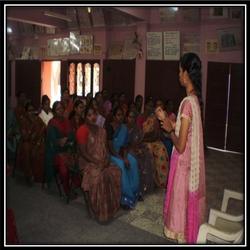
Dr. Srikumari Srisailapathy
Research Scientist, University Grants Commission
Broad contributions are in the genetics of sensory systems; seventy-five scientific papers published in peer-reviewed journals with a majority in the field of Genetic Deafness and other Communication Genetic Disorders related to Smell, Vision (Color Blindness, RP), Cognition (Fragile X & Parkinson’s) and Speech Dysfluencies (Stuttering) focusing on Genetic Epidemiology and Community Genetics.
 |
|---|
 |
 |
 |
 |
 |
 |
 |
Research
Currently, we work on a large cohort of Assortative Mating (AM) to understand the real-time auditory gene dynamics inspired by the stochastic models. AM is preferential mating among prelingual deaf. In a non-complementary mating when both the deaf mate, produce only deaf offspring; this can be avoided with effective genetic testing/counseling. We have constructed a repository of DNA database for deafness and stuttering along with Genetic Registers. Nearly 13 PhDs, 13 MPhil, and over 100 PG students joined hands in our effort to address ~10 human genetic disorders.
Our studies have an innate translational relevance to the participants. Our mission is to identify sensory impairments that have a genetic origin, quantify their prevalence for Indian populations. We provided genetic testing reports free of cost, increased awareness, and imparted genetics education to understand the reports.
We optimized innovative strategies to first communicate by signing/imagery language to drive genetics education. To this date reached out to ~30 deaf schools/~10 adult deaf associations (1200 cases) in south India. They do come back to us for genetic testing and counseling for their prospective mates and other family members.
Our study is a forerunner in the molecular genetics of assortative mating in hearing-impaired families. It has led to the emergence of many interesting findings related to demographic and inbreeding trends, complementarities of phenotypic and genotypic interactions, common Connexin gene dynamics, and mitochondrial mutations. Our counseling such families and understanding the mutational frequency of the first tier of genes now serve as a reference point for India.




